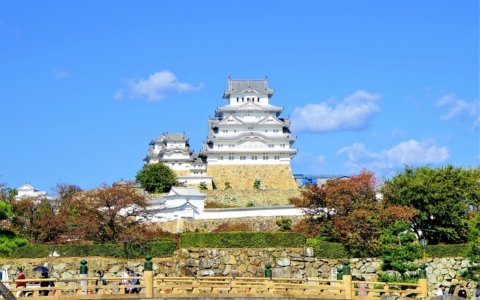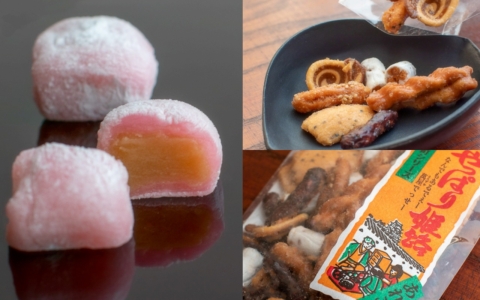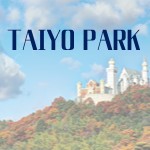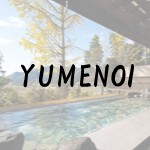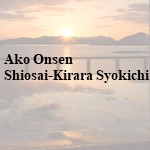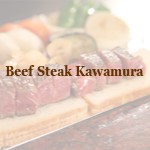All about Shoshazan Engyo-ji temple
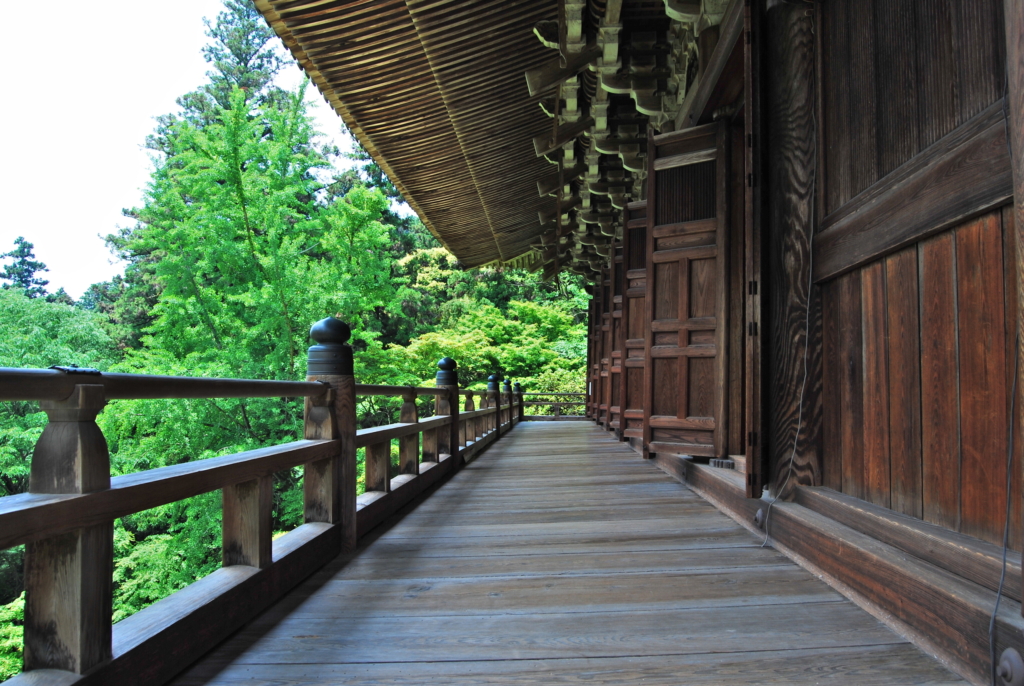
Learn the Temple's History and Culture, all things.
INDEX
- Engyōji Temple Grounds
- Maniden Main Hall
- Hall of the Thirty-Three Kannon Pilgrimage
- Yuya Bridge
- Stone Umbrella Stupa
- Dharmapala Boulders (Gohōseki)
- Zuikōin (Subtemple of Engyōji)
- Engyōji’s Three Halls
- Daikōdō (Great Lecture Hall)
- Jikidō (Refectory)
- Jōgyōdō (Circumambulatory Hall)
- Benkei’s Mirror Pond
- Hakusan Gongen Shrine
- Founder’s Hall (Kaisandō)
- Fudōdō Hall
- Shrines to the Divine Protectors Ototen and Wakaten (Gohōdō)
- Gohōdō Shrines Worship Hall (Haiden)
- Izumi Shikibu Memorial Stupa
- Vajrasattva Hall (Kongōdō)
- Yakushi Hall (Yakushidō)
- Jūjiin (Subtemple of Engyōji)
- Engyōji’s Bell and Belfry
- Lotus Hall (Hokkedō)
- Honda Family Graves
- Sakakibara Family Graves
- Grave of Matsudaira Naomoto
- Jūmyō’in (Subtemple of Engyōji)
- Juryō’in (Subtemple of Engyōji)
- Niōmon Gate and Statues of the Deva Kings
- Site of the Five-Story Pagoda
- Monjudō Hall and Shōkū’s Miraculous Encounter
- Daikōdō Shaka Triad (Shakasanzon)
- Four Heavenly Kings
- Seated Statue of Amida Buddha
- Seated Statue of Founding Abbot Shōkū
- Seated Statue of Kongō Satta on Lotus Dais
- Seated Statue of Founding Abbot Shōkū
- Seated Statue of Nyoirin Kannon
- Atago Shrine
- Origins of Engyōji Temple
- Festival of Peace and Bounty (Shushō-e)
- Spring Equinox Festival and Hoshi Matsuri
- Temple Stamps (Goshuin)
- Mt. Shosha Lacquerware (Shosha-nuri)
- Experiencing Buddhist Practices
- Musashibō Benkei
- Thirty-three Pilgrimage Sites of Western Japan
- Engyōji and the Arts
1.Engyōji Temple Grounds
Engyōji is located on Mt. Shosha, in central Hyogo Prefecture. Comprising dozens of historic buildings, monuments, and grave sites, the main temple and its six subtemples cover an area of more than 31 hectares. From the time of its establishment in 966 by the monk Shōkū (910–1007), Engyōji has received the patronage of wealthy aristocrats and members of the imperial family. Elite warriors and commoners also contributed to the creation of the temple’s structures and Buddhist images, many of which date to the Muromachi period (1336–1573) and are registered cultural properties.
The greater temple complex can be divided into three main sections. At its center is Maniden Hall. The hall stands on the site where, during the early period of his residence on the mountain, Shōkū is said to have witnessed a heavenly maiden dancing around a cherry tree and reciting holy poetry. Inspired by the miraculous vision, he sculpted the tree into a representation of the jewel-bearing bodhisattva Nyoirin Kannon (Sanskrit: Cintamanicakra). Although the icon was lost to fire and the Maniden has been rebuilt several times, the structure nonetheless retains its symbolic and ritual significance. It is the twenty-seventh stop along the “Thirty-three Pilgrimage Sites of Western Japan” (Saikoku Sanjūsansho). This route, which was established in the eighth century, continues to draw visitors from around the country and around the world.
One of the main areas of Engyōji Temple is centered on its three halls: the Daikōdō (Great Lecture Hall), Jōgyōdō (Circumambulatory Hall), and Jikidō (Refectory). Built between the tenth and fifteenth centuries, these elegant and imposing structures form an angular “U” that is centered on a broad courtyard. Representations of Shakyamuni and his two attendants housed within the Daikōdō were carved in 987 by the monk Kan’na, a disciple of Shōkū. From their elevated position, the trio gaze serenely across the courtyard to the Jōgyōdō’s attached stage.
A cluster of buildings at the western end of the grounds is Engyōji’s inner sanctum (okunoin). It includes the Kaisandō and Fudōdō Halls (built in 1673 and 1697 respectively) and the twin Gohōdō Shrines, which enshrine the deities Ototen and Wakaten. The pair have protected Engyōji since its establishment, and they feature prominently in temple lore and traditions that continue to this day.
For many centuries, visitors to Engyōji could reach the temple only by ascending Mt. Shosha via one of six narrow hiking trails. In 1958, a ropeway was established along the eastern route to facilitate access to the temple. Visitors who arrive via the ropeway enter the temple grounds by passing through the Niōmon Gate, a symbolic divide between the secular and sacred realms.
2.Maniden Main Hall (Nyoirindō)
The Maniden stands at the center of Engyōji’s complex. It was on this site that the founding abbot, Shōkū (910–1007), is said to have witnessed a heavenly maiden dancing around a cherry tree while chanting holy poetry. The maiden’s verse described Nyoirin Kannon (Sanskrit: Cintamanicakra), a six-armed manifestation of the Bodhisattva of Compassion, in the form of a living tree. According to the poem, Nyoirin Kannon would grant long life and prosperity and guarantee rebirth in paradise to all living beings. Inspired by the vision, Shōkū carved the cherry tree into a representation of Nyoirin Kannon and erected a tabernacle to protect it. Nyoirindō Hall was then built around the statue and tabernacle in 970.
The tabernacle reportedly remained shut, hiding the statue, until 1174, when Retired Emperor Goshirakawa (1127–1192) visited Engyōji and demanded to see it. Goshirakawa then gave the hall its present name, “Maniden,” which references the jewel (Sanskrit: mani) at the heart of Buddhist teachings, just as the statue is the cherished center of Engyōji. Although the Maniden has been rebuilt four times, each successive structure was erected on the site where the original cherry tree stood.
Inside the Maniden, five sets of thickly lacquered doors stand behind the altar. These tabernacles enshrine the principal image of the hall, along with images of the Four Heavenly Kings (shitennō). The doors are opened only once each year, on January 18, when Engyōji marks the new year with its Festival of Peace and Bounty.
3.Hall of the Thirty-Three Kannon Pilgrimage
This modest hall contains statues of the 33 forms of Kannon, the Bodhisattva of Compassion, who has vowed to guide all sentient beings to salvation. The hall fulfills an important role as a miniaturized version of the “Thirty-three Pilgrimage Sites of Western Japan” (Saikoku Sanjūsansho), a pilgrimage route that has been traveled for more than a millennium. Engyōji is the twenty-seventh destination along the route, which spans 1,000 kilometers and seven prefectures.
The Saikoku Sanjūsansho pilgrimage was established in the late Heian period (794–1185), but it was not until the Edo period (1603–1867) that it became widely popular. According to a passage in the Lotus Sutra, taking refuge in Kannon’s salvation will allow anyone to overcome great hardship, and those who visit all 33 sites of the pilgrimage are said to accumulate merit toward rebirth in the Pure Land, a paradise where enlightenment is assured. Belief in the Pure Land was especially widespread during the Edo period.
However, pilgrimages are long, difficult, and traditionally completed on foot, and during the Edo period, travel between regions was heavily regulated. From early on, the difficulty of these trips inspired enterprising monks to compress entire pilgrimage routes, or portions of them, into “duplicate sites” (utsushi reijō), single locations that could be visited in lieu of traveling to dozens of separate temples. Pilgrims who come to Engyōji can worship all 33 manifestations of Kannon at once, effectively completing the entire pilgrimage at one time, and receive the associated merit toward their next rebirth.
4.Yuya Bridge (Yuyabashi)
Yuya Bridge was built during the early seventeenth century and marks the end of a period of dramatic social and political flux. In the final decades of the sixteenth century, the shadow of war plunged Engyōji Temple into turmoil. Yuya Bridge exists today as a symbol of the temple’s restoration.
By the late fifteenth century, Engyōji had grown into a sprawling complex of many impressive buildings and held significant economic power. But the temple went into steep decline during the Warring States period (1467–1603), when widespread military conflict broke out across the country as various factions fought to fill a sudden power vacuum. In 1578, the warlord Toyotomi Hideyoshi (1537–1598; then known as Hashiba Hideyoshi) occupied Engyōji, transforming the temple complex into a mountain garrison to quarter his massive army of some 20,000 troops. During this time, the soldiers terrorized the monks and vandalized the buildings and Buddhist relics.
Engyōji’s fortunes began to improve in 1620, when Honda Tadamasa (1575–1631) became the new lord of Himeji Castle. Tadamasa was shocked at the rundown state of the temple, and he collected funds to restore it to its former glory. The Yuya Bridge was constructed during this period of revitalization. Three centuries later, in 1944, its original bronze baluster caps were taken to provide resources for the war effort. In 1955, new caps were cast with inscriptions honoring Tadamasa.
5.Stone Umbrella Stupa
This stone stupa is adorned with a relief carving of Amida Buddha, known also as the Buddha of Infinite Light and Life. Amida is a central figure of Pure Land Buddhism, one of the largest Buddhist traditions in Japan. According to Pure Land beliefs, Amida vowed to rescue all living beings from the endless cycle of rebirth. The carving depicts Amida seated upon a lotus blossom, a symbol of the capacity of sentient beings to transcend their existence through spiritual practice, just like a lotus that rises from a muddy, stagnant pond.
The stupa is significant as a record of the stylistic trends of the time in which it was made. The outer boundary of the recessed relief is carved in the shape of a flowerhead, a design feature of Chinese origin that became popular in Japan after Zen architecture was introduced from the mainland in the thirteenth century. The column’s gently upturned “umbrella” is another aesthetic detail characteristic of the Kamakura period (1185–1333). The teardrop stone at the top represents a wish-fulfilling jewel (hōju) like the one held by Nyoirin Kannon.
6.Dharmapala Boulders (Gohōseki)
Two legends surround this pair of moss-covered boulders. According to the first legend, Ototen and Wakaten, child avatars of the deities Fudō Myō-ō and Bishamonten, descended from the heavens and alighted upon these very stones when Engyōji’s founding abbot, Shōkū (910–1007), first arrived on Mt. Shosha in 966. Together, Ototen and Wakaten assisted Shōkū during the early days of his ascetic training. Ototen and Wakaten are known as gohō-zenshin (Sanskrit: dharmapala), or fierce defenders of Buddhist teachings. From this legend the stones came to be called Gohōseki, or “Dharmapala Boulders.” As protectors of Engyōji, Ototen and Wakaten have featured prominently in temple lore and traditions for over a millennium.
The stones are also known as “Benkei’s juggling balls” (Benkei no otedama) for their association with the legendary warrior monk Musashibō Benkei. Many myths and tall tales surround Benkei, but it is known that he studied at Engyōji as a young boy, and this fact has inspired a number of stories. According to legend, the young Benkei once tested his strength by juggling these boulders. Another tale describes a fight that broke out when Benkei was teased by his peers, leading to a catastrophic fire that destroyed the main buildings of Engyōji in 1331.
7.Zuikōin (Subtemple of Engyōji)
Zuikōin is one of six subtemples within the Engyōji complex. Historically, each subtemple supported the broader Engyōji community by fostering a group of parishioners, usually based around a charismatic abbot and a distinct set of practices, or the study of a particular sutra or deity. Although little is known about the history of Zuikōin, a plaque near the temple gate attests to its role as lodging for visiting pilgrims. Today the subtemple is celebrated for its scenic beauty. Its earthen outer wall and the brilliant colors of the maple leaves in autumn make it a popular backdrop for wedding photos.
Immediately opposite the temple stands a small shrine dedicated to Daikokuten, a syncretic deity of mixed Buddhist and Shinto origins who is associated with wealth, farmers, food, and good fortune. Nearby is a poetry stone honoring the celebrated poet Hatsui Shizue (1900–1976), who was born in the nearby city of Himeji.
8.Engyōji’s Three Halls (Mitsu no Dō)
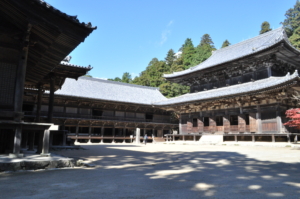
The Three Halls of Engyōji are a monument to the temple’s rich history, its religious practices, and the generations of monks who have used the site for over a millennium. The Daikōdō (Great Lecture Hall) marks the complex’s northern edge, facing the Jōgyōdō (Circumambulatory Hall) across a broad courtyard of white pebbles. The two-story Jikidō (Refectory) in the center, which resembles a long corridor, makes up the western edge of the Three Halls.
Built between the tenth and fifteenth centuries, each of the Three Halls fulfills an important role within life at the temple. The Daikōdō is a place of instruction that is used for lectures and debates. Following an architectural pattern common to temples of the Tendai sect, at the hall’s center is a sunken chamber with a floor of packed earth. The building’s principal image is the historical Buddha, Shakyamuni, who is flanked by two attendants: Monju, the Bodhisattva of Wisdom (right), and Fugen, the Bodhisattva of Right Conduct (left). The three gilded icons gaze serenely across the courtyard toward the stage in front of the Jōgyōdō.
The Jōgyōdō can be characterized as a place of ritual worship. On occasion, monks engage in a meditative practice called jōgyō zanmai. This practice entails repeatedly reciting a mantra while very slowly pacing around the hall’s central icon, a large statue of Amida, the Buddha of Infinite Light and Life. In some cases, this practice may be carried out continuously for as long as 90 consecutive days, with only short breaks for food and rest. Completing such an arduous practice is not only extremely difficult, but potentially dangerous, and jōgyō zanmai is only rarely performed by the monks at Engyōji.
The Jikidō, or Refectory, historically served as a residential space where monks slept and took their meals. Although construction of the building began in 1174 by request of Retired Emperor Goshirakawa (1127–1192), the Jikidō remained unfinished until 1963. Today, the first floor is used mainly by visitors as a space to practice the merit-accruing act of copying sutras. Various religious and cultural artifacts that shed light on Engyōji’s long, rich history are exhibited on the second floor.
The excellent condition of the buildings and their U-shaped layout around a central courtyard make the Three Halls a favored location for television and film productions. They have appeared in several popular historical dramas, including one scene of the blockbuster film The Last Samurai (2003), starring Tom Cruise and Ken Watanabe.
All three halls are registered Important Cultural Properties.
9.Daikōdō (Great Lecture Hall)
The Daikōdō, or Great Lecture Hall, is the northernmost building of the central trio of structures at Engyōji known as the Three Halls. As its name suggests, The Daikōdō is a place for teaching, and is considered one of the most important buildings in the temple complex. Although the original structure was built in the tenth century by the order of Retired Emperor Kazan (968–1008), the present structure dates to the fifteenth century. Its design, a harmonious blend of continental and Japanese stylistic elements, also bears traits characteristic of the Tendai sect of Buddhism. For example, the hall’s principal image, a statue of Shakyamuni, the historical Buddha, stands in a sunken central chamber. The figure is seated upon a lotus blossom, which itself rests upon a tapered dais that narrows at the center. The shape is suggestive of Mt. Sumeru, the five-peaked sacred mountain of Buddhist cosmology that represents the center of the physical, metaphysical, and spiritual worlds.
Shakyamuni is flanked by standing attendants whose hands are similarly poised in a mudra gesture representing the act of teaching. From their elevated position, the gilded triad gaze out across the courtyard toward the forestage of the Jōgyōdō (Circumambulatory Hall), another of the Three Halls. During certain major events of the temple’s yearly calendar, dances are performed on this stage to honor these deities. The alignment of these two structures along a north-south axis and their complimentary placement show the careful planning that went into the configuration of the Three Halls.
The Daikōdō and each statue of the triad are Important Cultural Properties.
10.Jikidō (Refectory)
Linking the Daikōdō (Great Lecture Hall) with the Jōgyōdō (Circumambulatory Hall), the Jikidō (Refectory) forms the west axis of the Three Halls (Mitsu no Dō) of Engyōji. Historically, the Jikidō was a residential space where monks studied, slept, and took their meals.
Construction of the first building to occupy this site began in 1174 at the request of Retired Emperor Goshirakawa (1127–1192). Natural disasters destroyed that first hall, and the one that replaced it. Work on the building we see today began in the mid-fifteenth century, but it was delayed by the sheer scale and complexity of what would be the largest two-story hall of its kind in Japan. Ultimately, the Jikidō remained unfinished for nearly five centuries. Its second story was completed in 1963 as part of a major renovation project. Interestingly, the long passage of time between its conception and completion led to some errors in construction. For example, the southeast corner of the hall’s roof juts against the roof of the Jōgyōdō in a way that is clearly visible from the second-floor balcony.
Today, the first floor of the Jikidō is used primarily as a space where visitors can practice the merit-accruing act of copying sutras. On the second floor, numerous religious and cultural artifacts that shed light on the rich history of Engyōji are on display. Among them is a fourteenth-century statue of Kongō Satta (Sanskrit: Vajrasattva), a bodhisattva who symbolizes an unshakable aspiration for enlightenment.
The Jikidō is an Important Cultural Property. The Kongō Satta statue is a Cultural Property of Hyogo Prefecture.
11.Jōgyōdō (Circumambulatory Hall)
The Jōgyōdō (Circumambulatory Hall) is the south anchor of the trio of central structures known as the Three Halls, and it enshrines a gilded statue of Amida, the Buddha of Infinite Light and Life. A prominent feature of the building is its forestage, which is used for sacred Bugaku dances and other ceremonial performances. The present structure dates to the Muromachi period (1336–1573). As suggested by the hall’s name, it is the site where monks have historically engaged in a meditative practice that entails pacing around the devotional statue while reciting Amida’s mantra. In some cases, they continue for as many as 90 consecutive days, with only brief breaks for food and rest.
Inside the hall, Amida is depicted in a classic meditative posture, seated with legs folded upon a double lotus blossom. The eyes are half-closed, and the hands are gently folded into a mudra gesture indicating contemplation. The elongated earlobes, cranial bump, and round tufts of hair are iconographic devices frequently used in Buddhist imagery to signify compassion, wisdom, and enlightenment. Amida is portrayed with a golden halo of emanating rays. The cardinal directions of the halo are adorned with three Sanskrit characters that are the “seed syllables” for Amida and the Bodhisattvas of Compassion and Wisdom, who are often portrayed flanking the deity. A wooden backdrop is painted with the 25 bodhisattvas who descend with Amida from the Pure Land paradise on purple clouds to escort sentient beings to salvation.
Both the statue of Amida and the Jōgyōdō itself are Important Cultural Properties.
12. Benkei’s Mirror Pond
Musashibō Benkei (1155–1189) was a warrior monk who studied at Engyōji in his youth. Renowned for his superhuman strength and great loyalty, Benkei appears as a heroic figure in many traditional folk tales and stage productions, as well as in modern anime and manga. Although he is often presented as a paragon of bravery, Benkei is also known for his short temper and tendency toward violence.
The less flattering sides of his personality have given rise to a number of dramatic stories about Benkei, including one that involves this pond. As the story goes, a young monk named Shinanobō Kaien used a lump of charcoal to write an insult on Benkei’s face while he slept. When Benkei awoke to find a group of young monks laughing and jeering at him, he ran to this pond to see his reflection in the water. Enraged at Kaien’s graffiti, which compared his face to the bottom of an old sandal, Benkei began violently tearing away large sections of the temple buildings. Although there is no reliable historical evidence to support this story, the incident is said to have caused a great fire that reduced Engyōji’s most important structures to ash.
13. Hakusan Gongen Shrine
This shrine to the mountain deity Hakusan Gongen stands on a site that was revered for centuries prior to the establishment of Engyōji. According to the Kojiki, an eighth-century text that describes the creation of Japan, the deity Susanoo no Mikoto stopped to rest on this mountain while making his way to Izumo Province. Susanoo had been banished from the heavens for disrespecting his sister, Amaterasu, the Sun Goddess and ancestress of the imperial lineage. The mountain subsequently came to be worshipped as a dwelling place of Susanoo, and long before Engyōji was established the mountain was visited by ascetics and hermits. In fact, it is believed that its name “Mt. Shosha” (Shoshazan) may have developed from pronunciation shifts in the Japanese for “Susanoo’s Mountain” (susazan).
Shortly after arriving on Mt. Shosha in 966, Engyōji’s founding abbot, Shōkū (910–1007), is said to have engaged in ascetic practices and ultimately achieved enlightenment at this very site. It is also here that Shōkū is believed to have witnessed the miraculous appearance of a heavenly maiden that inspired him to carve a statue of Nyoirin Kannon and build the Maniden to protect it. Hakusan Gongen Shrine’s auspicious history and association with both Susanoo and Engyōji’s founder have inspired visits by generations of pilgrims.
14. Founder’s Hall (Kaisandō)
The Kaisandō, or Founder’s Hall, is the most important structure of an area of Engyōji known as the “inner sanctum” (okunoin). The hall was first built in 1007 to enshrine the sanctified remains of the founding abbot, Shōkū (910–1007). Buddhist rituals have been held here every day for more than a thousand years.
The present structure, which dates to 1673, is a classic example of freeform temple architecture from the mid-Edo period (1603–1867). The interlocking brackets that support the roof are decorated with a variety of elaborate carvings, including three mythical guardian deities (kongō rikishi) sculpted by the celebrated artist Hidari Jingorō (fl. 1624–1644). Legend states that originally, one mythical guardian supported the eaves at each of the building’s four corners, but one of the rikishi was unable to bear the enormous weight, and he fled, leaving the three that can be seen today.
Following an architectural pattern common to temples of the Tendai sect, the center of the hall features a sunken chamber. The main altar supports a large reliquary with heavily lacquered doors and an intricate roof. The hall’s coffered lattice ceiling is raised in the space above the reliquary, creating a symbolic division that indicates Shōkū’s elevated status.
The reliquary houses a life-sized statue of Shōkū. When researchers x-rayed the statue in 2008, they discovered that its head contained bones that are believed to be those of Shōkū himself. The Founder’s Hall is an Important Cultural Property.
15. Fudōdō Hall
The small structure located on a raised stone dais near the entrance to the inner sanctum (okunoin) is Fudōdō Hall. Although the building’s exterior is plain, the images it enshrines are of great religious significance. Principal among them is a statue of Fudō Myō-ō (Sanskrit: Acala), one of the five Wisdom Kings. His fierce scowl and protruding fangs give him an expression that starkly contrasts his reputation for limitless compassion. Fudō Myō-ō is deeply revered within the Tendai and Shingon sects of Esoteric Buddhism. He is said to be a powerful deity who protects the faithful by burning away karmic impediments and defilements. In typical fashion, the statue holds a straight sword in its right hand and a noose in its left. As a hallmark of his key role as a dharma warrior and karmic purifier, Fudō Myō-ō is frequently depicted engulfed in flames and seated on a solid rock base.
Engyōji has a particularly strong association with Fudō Myō-ō through its connection to Ototen and Wakaten, the temple’s protector deities. Ototen is considered an avatar of Fudō Myō-ō who, together with Wakaten, features prominently in temple traditions, including the Festival of Peace and Bounty held each year on January 18. Ototen and Wakaten are enshrined in the Gohōdō, two small shrines that neighbor Fudōdō Hall.
16. Shrines to the Divine Protectors Ototen and Wakaten (Gohōdō)
The twin Gohōdō shrines, which stand side-by-side within the inner sanctum (okunoin), enshrine Engyōji’s protector deities, Ototen and Wakaten. Ototen is an avatar of the Wisdom King Fudō Myō-ō, and Wakaten is an avatar of Bishamonten (Sanskrit: Vaishravana), a celestial guardian of earthly treasures. Known as fierce protectors of Buddhist teachings, these deities are thought to have assisted Shōkū (910–1007), the founder of Engyōji, when he began his ascetic training on Mt. Shosha in 966. They have served as Engyōji’s protectors from the start, featuring prominently in the temple’s lore and in traditions that continue to this day. The most important observance of the calendar year at Engyōji is the Festival of Peace and Bounty held on January 18. On this special occasion, masked performers representing Ototen, the green deity, and Wakaten, the red deity, dance wildly around the temple grounds, waving a pine torch and ringing a bell.
The avatars themselves are enshrined in the twin structures—Ototen on the right and Wakaten on the left. Technically speaking, these two shrine structures are considered “principal halls” (honden), the buildings that enshrine the deities themselves. Typically, a semi-attached worship hall stands in front of the principal hall for visitors to make offerings and perform rituals to honor the enshrined deities. In this case, however, the worship hall is detached and faces the twin shrines from across the courtyard.
17. Gohōdō Shrines Worship Hall (Haiden)
This rectangular hall is closely associated with the two deities enshrined at the Gohōdō Shrines across the courtyard, on the opposite side of Engyōji’s inner sanctum (okunoin). In addition to functioning as the worship hall for the two shrines, this structure is also used for rituals and by pilgrims visiting the adjacent Founder’s Hall.
The structure, which dates to 1589, blends the stylistic conventions of temple and shrine architecture. According to temple lore, it was once the study chamber of the legendary twelfth-century warrior monk Musashibō Benkei (1155–1189), who trained on Mt. Shosha between the ages of seven and ten. The actual desk that Benkei is said to have used is on display on the second floor of the Jikidō (Refectory).
Shrines in Japan generally consist of two semi-attached architectural elements, a “principal hall” (honden) and a “worship hall” (haiden). In the case of the Gohōdō shrines, however, instead of one honden, there are two, known collectively as the Gohōdō. These structures enshrine Engyōji’s protector deities, Ototen and Wakaten. The location of this building, the haiden, is also unusual—instead of being attached to the front side of the Gohōdō, it is completely separate, located on the other side of the courtyard.
18. Izumi Shikibu Memorial Stupa
Izumi Shikibu (ca. 976–1036) was a court lady and renowned literary figure of the Heian period (794–1185). She is especially known for her waka, a poetic style in which each poem has 31 syllables grouped into five lines of 5-7-5-7-7. This stone stupa was erected to honor Shikibu and celebrate one of her most famous verses. The poem is thought to have been composed between 1002 and 1005, when Izumi Shikibu is said to have sought the guidance of Engyōji’s founding abbot, Shōkū (910–1007), after turning to Buddhism in search of spiritual solace.
From darkness I come
To set out along a path
Of greater darkness;
Illuminate my dark path,
O, moon on the mountain’s peak.
The verse draws on familiar poetic allusions to highlight the relationship between suffering and salvation. The “moon,” for example, is a symbol of Buddhist enlightenment, but also of Shōkū himself. The poem was selected for inclusion in an imperial anthology, the highest poetic honor of the day. Shōkū was so deeply moved by Izumi Shikibu’s appeal that he sent an immediate reply:
Though the sun has set
The moon has not yet risen;
In the growing dusk,
I illuminate the night
With the beacon of the dharma.
Temple records state that when Izumi Shikibu died, she was laid to rest in a robe sent to her by Shōkū.
The stupa was erected in 1233, making it the oldest inscribed stone monument in Hyogo Prefecture. However, virtually every piece of it has been replaced or repaired over the subsequent centuries.
19. Vajrasattva Hall (Kongōdō)
Vajrasattva Hall stands at a site of special importance to Engyōji’s founding abbot, Shōkū (910–1007). It is believed that during the early years of his training on Mt. Shosha, Shōkū resided in the subtemple of Fugen’in, which once stood in this area. It was while living at Fugen’in that Shōkū was visited by the bodhisattva Kongō Satta (Sanskrit: Vajrasattva). Kongō Satta symbolizes an unshakable aspiration for enlightenment and is a central figure in the Tendai sect of Buddhism. The deity reportedly taught Shōkū sacred hand gestures (mudra) that represent the Diamond and Womb mandalas, themselves representations of metaphysical realms that are fundamental to Esoteric Buddhist practice.
During the Muromachi period (1336–1573), the thatched-roof Buddha Hall of Fugen’in was moved here to enshrine a statue of Kongō Satta that commemorates Shōkū’s miraculous encounter. The structure is centered on a gilded tabernacle that originally enshrined the statue, which is now on display on the second floor of the Jikidō (Refectory). The statue was carved in 1359 by Kōshun, the official sculptor of the Tōdaiji Temple in Nara.
Vajrasattva Hall was refurbished in 1544, at which time the roof was tiled and the ceiling was painted with colorful depictions of sacred objects and beings from a variety of Asian religious traditions. Among them are two dragons, which in Buddhism often represent enlightenment. In another part of the ceiling, an immortal Karyōbinga (Sanskrit: Kalavinka), half bird and half human, takes flight to preach the dharma with its sublime voice.
20. Yakushi Hall (Yakushidō)
Yakushi Hall is the oldest structure of the Engyōji Temple complex. When major renovations were conducted on the building in 1978, artifacts from the Nara period (710–794) were discovered inside. The presence of those artifacts suggests the site had religious significance even before Engyōji’s founder, Shōkū (910–1007), arrived on Mt. Shosha in 966. Numerous reconstructions and additions over the centuries have made it difficult to trace the building’s architectural history with much accuracy. Nevertheless, the large main pillars and decorative roof beams suggest it was based on an early continental model of temple construction called Daibutsuyō (literally, “Great Buddha Style”).
The hall is named for the statue it enshrined of Yakushi, known as the Healing Buddha or the Master of Medicine. Yakushi’s associations with health and healing made him popular with members of the imperial court, and he was one of the earliest Buddhist deities to become a subject of worship after the introduction of Buddhism in the sixth century. Veneration of Yakushi became widespread in the eighth century as Buddhism became popular among the common people, and it is not unusual for temples to have a hall enshrining his image. In most cases, Yakushi is depicted holding a medicine bowl in his left hand. The statue associated with the Yakushi Hall here at Engyōji dates from the Muromachi period (1336–1573) and is currently on display on the second floor of the Jikidō (Refectory).
21. Jūjiin (Subtemple of Engyōji)
Jūjiin originally occupied expansive grounds to the west of the Founder’s Hall (Kaisandō). At its present location, it is the only subtemple on Mt. Shosha from which the Inland Sea is visible. The hall contains an image of Kannon, the Bodhisattva of Compassion. The word jūji in its name refers to the final 10 stages of the 52-stage path to becoming a bodhisattva.
This building was used by American actor Tom Cruise during breaks in the filming of the Hollywood blockbuster The Last Samurai (2003), and temple staff affectionately refer to it as “Tom’s House.” On each day of filming, Mr. Cruise reportedly traveled to Engyōji Temple by private helicopter from his hotel in Kobe.
22. Engyōji’s Bell and Belfry
During the early modern period (between the sixteenth and nineteenth centuries), when clocks were uncommon, temple bells served an important function as a communal indicator of time. Following the traditional Chinese method of timekeeping, which divides a day into 12 periods, temple bells were rung every two hours. They were also rung on special occasions, such as new year’s celebrations, and festivals, and to signal danger, such as the outbreak of a fire.
The belfry at Engyōji sits upon a sloping pyramidal base, a style called hakama-zukuri after its resemblance to the silhouette of a person wearing a hakama, a full-cut traditional garment worn from the waist down. The matrix of interlocking brackets just above its base is designed to evenly distribute the structure’s substantial weight and to support the surrounding veranda. A similar set of brackets is visible under the eaves of the heavily tiled roof. The bronze bell inside is ornately decorated with imagery common to Buddhist symbology, including dragons and lotus blossoms. Although the bell bears no inscription, stylistic elements suggest that it was cast sometime in the Kamakura period (1185–1333), making it the oldest such bell in Hyogo Prefecture and also one of the oldest in Japan. The belfry itself dates to about 1332 and is thought to be a reconstruction of an even earlier structure. The belfry is an Important Cultural Property, and its bell is a Cultural Property of Hyogo Prefecture.
23. Lotus Hall (Hokkedō)
The Lotus Hall is named after the Lotus Sutra (Hokkekyō), a core text of Mahayana Buddhism that is widely revered across East Asia. The hall’s principal image is a gilded statue of Fugen (Sanskrit: Samantabhadra), the Bodhisattva of Right Conduct. Fugen is depicted seated upon a lotus blossom in a classic meditative posture, holding a lotus flower in his hand and wearing an elaborate bronze crown. The supporting podium has a narrow chamber that contains a carving of an elephant. The elephant is black, a break from conventional representations of Fugen, which generally depict him accompanied by a white elephant. Behind Fugen rises a gilded mandorla which, like a halo, symbolizes the emanation of sacred power.
The hall’s coffered lattice ceiling is raised in the space directly above the icon, creating a symbolic division that expresses the importance of the deity. Golden decorations that hang from the ceiling bear inscriptions of the mantra of infinite light written in the Indian Siddham script. The present building and its principal image are from the Edo period (1603–1867).
24. Honda Family Graves
These structures mark the graves of members of the Honda, a family of samurai bureaucrats whose leaders patronized the temple during the Edo period (1603–1867). In 1620, the lord of Himeji Castle, Honda Tadamasa (1575–1631), was shocked to learn that the temple had become badly dilapidated through two years of occupation by the warlord Toyotomi Hideyoshi (1537–1598). Tadamasa began a fundraising campaign to restore the temple to its former glory, and it is thanks to him that so many of Engyōji’s core structures remain today. Tadamasa’s father, Tadakatsu, and three of their successors are memorialized at this site. Tadakatsu was one of the most trusted advisors of Tokugawa Ieyasu (1543–1616), the founder of the Tokugawa shogunate.
Each of the five Honda heirs is memorialized by a stone memorial tower (gorintō) set within identical square pagodas. The heavily tiled pyramidal roofs have gently upturned eaves and are capped with spherical finials. All five buildings are Cultural Properties of Hyogo Prefecture.
Two additional stone stupas at the site honor Tadamasa’s son, Honda Tadatoki, and grandson, Togashi Kōchiyo. Behind the stupa memorializing Tadatoki are three smaller graves belonging to samurai who took their own lives as an act of ultimate loyalty and sacrifice following Tadatoki’s death.
25. Sakakibara Family Graves
This site memorializes two heads of the Sakakibara family, who served as lords of Himeji Castle during the Edo period (1603–1867). The stone tower and stele on the left honor Sakakibara Masafusa (1641–1667), who was lord of the Himeji domain for the last two years of his life. The stele is inscribed with his formal rank and title: “Former Deputy Minister of Justice, Junior Fourth Rank (lower), Lord Minamoto.” The inclusion of the name “Minamoto” shows Masafusa’s genealogical ties to the Tokugawa house, which itself claimed descent from Minamoto no Yoritomo (1147–1199), Japan’s first great warrior leader. The grave to the right memorializes Sakakibara Masasuke (1705–1732).
Both monuments sit atop mythical turtles (kifu), which symbolize effort and industriousness. The stone pagodas behind each stele are inscribed with characters representing the five elements of Buddhist cosmology written in Siddham script. From the top, they read “sky,” “wind,” “fire,” “water,” and “earth.”
This pair of monuments were created by another lord of the Himeji domain, Sakakibara Masamine (1715–1743), around the year 1734. Masamine was known for his extravagance, and he was quickly transferred to a smaller domain after spending a tremendous sum on the contract of a famous Yoshiwara courtesan. As lord of Himeji, Masamine started a summer yukata festival that is still held every June. Descendants of the Sakakibara family take part in the festivities, after which they visit these graves. The many lanterns that adorn the area in front of the grave site were donated during these visits, or by descendants of the families who were once retainers of the Sakakibara family.
26. Grave of Matsudaira Naomoto
This grave site memorializes Matsudaira Naomoto (1604–1648), the nominal ninth lord of Himeji Castle. Naomoto was appointed daimyo of Himeji domain in 1648, but he died while traveling to Himeji from his former domain in Yamagata, far to the northeast. The position was then transferred to his son, Naonori (1642–1695). Although Naomoto was originally buried at Saijōji Temple in Kanagawa, in 1670 Naonori moved his remains here in recognition of his very brief time as lord of Himeji Castle. During the Edo period (1603–1867), lordship over a domain was determined and awarded by the shogunate, who frequently shuffled daimyo between different regions as a way to limit their local influence and prevent uprisings. Naomoto and Naonori were each forced to change domains many times during their careers, which earned them the sobriquet of “floating daimyo” (hikkoshi daimyō).
The pagoda at the center of the walled compound is engraved with Chinese characters representing the five elements of Buddhist cosmology. From the top, they read “sky,” “wind,” “fire,” “water,” and “earth.” The area around the lowest character for “earth” is inscribed with Naomoto’s posthumous Buddhist name and epitaphs honoring his various titles and ranks.
The surrounding stone wall partially collapsed at some point over the centuries, and only the frontmost section resembles how the wall would have looked during the seventeenth century. The wall around the far side of the mausoleum has been rebuilt using the original stone blocks, but the wall was originally a uniform height.
27. Jūmyō’in (Subtemple of Engyōji)
Jūmyō’in was commissioned by the warlord Akamatsu Mitsusuke (1381–1441) to honor his daughter, who died at the youthful age of sixteen. Its principal icon is a statue of the thousand-armed manifestation of Kannon, the bodhisattva of compassion. The statue is relatively large, and it is thought to have been made the same size as Mitsusuke’s daughter. The sliding doors of the subtemple’s three central rooms are decorated with beautifully preserved monochrome ink paintings by Kanō Einō (1631–1697), grandson of the founder of the renowned Kanō school.
The subtemple’s guest hall was built in 1691. Its construction combines the guest quarters with the kuri, a building that functioned as the subtemple’s kitchen, but the two areas were kept strictly separate. The undulating eaves on the outer gate and the exquisite design of the room, in the shoin-zukuri style, indicate that it was intended for guests of honor.
The story of the death of Mitsusuke’s daughter evinces a turbulent period in medieval Japanese history. In the first half of the fifteenth century, this area was controlled by the autocratic shogun Ashikaga Yoshinori (1397–1441). Fearing treachery, Yoshinori planned to assassinate several of his closest advisors, including Akamatsu Mitsusuke. Mitsusuke’s daughter learned of the plot while in residence at the shogun’s palace, and she sent her father a letter of warning. When Yoshinori discovered what the girl had done, he ordered her death. Thanks to his daughter’s tragic sacrifice, Mitsusuke was able to take pre-emptive action. He assassinated the tyrant Yoshinori at a reception in Kyoto in the summer of 1441.
28. Juryō’in (Subtemple of Engyōji)
Juryō’in is considered the most important subtemple of the Engyōji complex. It boasts the special honor of having acted as the guest quarters of Retired Emperor Goshirakawa (1127–1192) during his week-long visit to Engyōji in 1174. The present structure harmoniously blends classical (shinden) and early modern (shoin) architectural styles. The latter is exemplified by alcoves, staggered shelves, interior partitions, and tatami flooring. The central Buddha hall is adorned with a copy of the Taima Mandala, which depicts the Buddhist Pure Land, a paradise where enlightenment is guaranteed.
An entrance hall and elegant gate with a cusped-gable roof separate the residential spaces described above from another section of Juryō’in that is used mainly as a kitchen. One room contains a display of various pieces of Shosha-nuri, the distinctive crimson lacquerware for which Mt. Shosha is famous. Today, Juryō’in is used to host weddings and other private events. With a booking, guests can enjoy traditional Buddhist vegetarian cuisine served on Shosha-nuri.
29. Niōmon Gate and Statues of the Deva Kings
The Niōmon Gate is the main entrance to Engyōji. Located at the end of the main route to the temple on the mountain’s eastern side, it marks the symbolic divide between the sacred realm of the temple and the secular world outside. Three bays wide and two bays deep, the gate follows a classical architectural model: when viewed from the outside, the tiled roof has a single central ridge line. From beneath, however, visitors can see two triangular sub-ridges tucked snugly inside the roof. This unusual design feature, called “triple ridges” (mitsumune-zukuri), is found only at several of the oldest temples in Japan, including Tōdaiji and Hōryūji.
Two chambers are located on either side of the gate. Inside are statues of the deva kings Naraen Kongō-ō (right) and Misshaku Kongō-ō (left). Rippling with muscle and bearing fierce expressions, these deities use their impressive size and strength to uphold Buddhist teachings and to frighten away ignorance. These statues are referred to as “Ah” and “Om.” These names are taken from the first and last letters of the Sanskrit alphabet. Like the classical Greek notion of Alpha and Omega, they refer to “the beginning and the end” and symbolize universality and omnipotence. Also known as the Guardians of the Diamond Realm (Kongō-rikishi), the deva kings often guard the gates of temples throughout East Asia.
30. Site of the Five-Story Pagoda
These foundation stones are thought to be the last remnants of a five-story pagoda that once stood on the grounds of Engyōji and appears in several historical illustrations. It is recorded that the fire that destroyed the Three Halls (Mitsu no Dō) in 1331 was started when a pagoda near the Great Lecture Hall was struck by lightning. That pagoda was inscribed with images of the five buddhas of the Diamond Realm Mandala. Accordingly, this pagoda is believed to have been inscribed with the five buddhas of the Womb Realm Mandala. This convention is common within the Tendai and Shingon sects of Esoteric Buddhism, in which pagodas serve as the sites of important rituals.
Within a Buddhist context, pagodas evolved from reliquaries that house the sanctified remains of the historical Buddha or other holy figures. Such relics, called busshari (Sanskrit: sarira) are crystal-like objects said to remain after the body of an eminent monk or nun is cremated. Although pagodas are built in a variety of forms depending on the country, period, and Buddhist sect of their association, in Japan they most often have three or five levels and are capped by nine-tiered bronze finials. In some cultures, pagodas are thought to symbolize Mt. Sumeru, the sacred summit at the center of the cosmos.
31. Monjudō Hall and Shōkū’s Miraculous Encounter
This is believed to be the site of a miraculous encounter between Engyōji’s founding abbot, Shōkū (910–1007), and an incarnation of Monju (Sanskrit: Manjushri), the Bodhisattva of Spiritual Insight. According to legend, in 966 Shōkū was traveling to the capital in Kyoto after decades spent in Kyushu, where he lived as a hermit and studied the Lotus Sutra. After entering Harima Province (now Hyogo Prefecture), Shōkū noticed a plume of mysterious purple clouds floating over Mt. Shosha. As he ascended the mountain’s western face, he encountered an old, grey-haired monk. The monk taught Shōkū about Mt. Shosha’s origins and history, revealing that the mountain enshrined soil from Vulture Peak, the place in ancient India where Shakyamuni Buddha first preached the Lotus Sutra. When Shōkū expressed his desire to live on Mt. Shosha, the old man revealed himself to be an incarnation of Monju and vanished without a trace.
The hall that originally stood on this site was named for Monju, and it once held a statue of him as its principal image. The present structure was built after the original was destroyed by fire in 1987.
In front of the hall is a cluster of small stone carvings and pagodas. The carvings, which resemble a child monk wearing a crimson bib, represent the bodhisattva Jizō. Found throughout Japan, Jizō statues are thought to protect the souls of children who die before birth or while still very young. The bibs that may adorn these statues are often donated (and, in many cases, handmade) by mourning parents.
32. Daikōdō Shaka Triad (Shakasanzon)
The statues at the center of the Daikōdō (Great Lecture Hall) are known collectively as the Shaka Triad. The central figure represents the historical Buddha, Shakyamuni. He is seated in a meditative posture, with eyes half-closed and hands in a mudra gesture that indicates teaching. The statue’s elongated ears, cranial bump, and curls of hair are iconographic devices used in Buddhist imagery to signify compassion, wisdom, and enlightenment. The dais beneath his lotus throne symbolizes Mt. Sumeru, the sacred mountain of Buddhist cosmology that sits at the center of the physical and metaphysical universes.
Shakyamuni is flanked by attendants, whose hands also display the teaching mudra. To the Buddha’s right is Monju, the Bodhisattva of Spiritual Insight. To his left is Fugen, the Bodhisattva of Right Conduct. Behind each statue is a gilded mandorla that, like a halo, symbolizes the emanation of sacred power. From their elevated position, the three icons gaze across the courtyard toward the stage of the Jōgyōdō, where performances are held in their honor during major temple functions. The precise alignment of these two structures shows the careful planning that went into the composition of the Three Halls.
The three statues were created in about 986 by the monk Kan’na, a disciple of Shōkū (910–1007), the founding abbot of Engyōji. Each statue was meticulously carved from a single piece of cypress timber and finished with lacquer and gold leaf. The Daikōdō and each member of the statue triad are Important Cultural Properties.
32. Daikōdō Shaka Triad (Shakasanzon)
The statues at the center of the Daikōdō (Great Lecture Hall) are known collectively as the Shaka Triad. The central figure represents the historical Buddha, Shakyamuni. He is seated in a meditative posture, with eyes half-closed and hands in a mudra gesture that indicates teaching. The statue’s elongated ears, cranial bump, and curls of hair are iconographic devices used in Buddhist imagery to signify compassion, wisdom, and enlightenment. The dais beneath his lotus throne symbolizes Mt. Sumeru, the sacred mountain of Buddhist cosmology that sits at the center of the physical and metaphysical universes.
Shakyamuni is flanked by attendants, whose hands also display the teaching mudra. To the Buddha’s right is Monju, the Bodhisattva of Spiritual Insight. To his left is Fugen, the Bodhisattva of Right Conduct. Behind each statue is a gilded mandorla that, like a halo, symbolizes the emanation of sacred power. From their elevated position, the three icons gaze across the courtyard toward the stage of the Jōgyōdō, where performances are held in their honor during major temple functions. The precise alignment of these two structures shows the careful planning that went into the composition of the Three Halls.
The three statues were created in about 986 by the monk Kan’na, a disciple of Shōkū (910–1007), the founding abbot of Engyōji. Each statue was meticulously carved from a single piece of cypress timber and finished with lacquer and gold leaf. The Daikōdō and each member of the statue triad are Important Cultural Properties.
33. Four Heavenly Kings (Shakasanzon)
The Four Heavenly Kings are deities within the Mahayana Buddhist tradition and are found throughout Asia. Clad in heavy armor and holding sturdy staves and spears, they guard the north, south, east, and west against enemies of the Buddha. As such, they are often arranged around a central icon and placed on a dais that represents Mt. Sumeru, the sacred, five-peaked mountain of Buddhist cosmology. It is thought that these statues of the Four Kings were originally meant to surround the Shaka Triad on the central dais in the Daikōdō (Great Lecture Hall). Since 1933, however, they have been shut inside tabernacles in Maniden Hall. The doors of the tabernacles are opened only once each year, when Engyōji marks the new year with its Festival of Peace and Bounty on January 18.
Each of the statues was carved from a single block of Japanese cypress in the late tenth century by the monk Kan’na, a disciple of Shōkū (910–1007), the founding abbot of Engyōji. While each of the Four Kings is unique, they share several common traits, including gilded halos and bases shaped like swirling clouds. They are depicted trampling demonic creatures (amanojaku) that represent ignorance of the Buddha’s teachings.
34. Seated Statue of Amida Buddha
The principal icon of the Jōgyōdō (Circumambulatory Hall) is a statue of Amida, the Buddha of Infinite Light and Life. Amida is depicted in a classic meditative posture, with eyes half-closed and hands folded into a mudra gesture that indicates contemplation. In Buddhist imagery, statues of buddhas and bodhisattvas are often depicted with some of the “32 marks of the Buddha,” (sanjūni-sō), which signify compassion, wisdom, and enlightenment. These include elongated ears, a cranial bump, and curls of hair. A crystalline stone on the forehead symbolizes a third eye capable of seeing through worldly illusions.
The Amida statue was constructed using a sophisticated method of joinery called yosegi-zukuri, in which several pieces of cypress are locked together before carving. Once carved, the sculpture was coated in lacquer and gilded. Textual records confirm that the statue was created in about 1005 by the artist Anchin, a disciple of Shōkū (910–1007), the founding abbot of Engyōji. Both the statue and the Jōgyōdō are Important Cultural Properties.
Amida is represented with a golden halo and rays of light that emanate from behind the deity’s head. The cardinal directions of the halo are adorned with three Sanskrit characters that are the “seed syllables” for Amida and the Bodhisattvas of Compassion and Wisdom, who are often portrayed flanking the deity. A wooden backdrop is painted with the 25 bodhisattvas who travel with Amida when the deity descends from the Pure Land paradise on purple clouds to escort sentient beings to salvation.
35. Seated Statue of Founding Abbot Shōkū
The Founder’s Hall at Engyōji is centered upon an elaborately decorated tabernacle. This structure houses a life-sized statue of the monk Shōkū (910–1007), who established the temple in the tenth century. According to temple records, the original statue was destroyed by fire in 1286. Just two years later, however, it was recreated by the artist Keikai (dates unknown). When the statue was x-rayed in 2008, researchers discovered an ossuary concealed within the head section that contained bones that are believed to be those of Shōkū himself. The small container had apparently survived the fire that destroyed the original statue and been transferred by Keikai into the new one.
In 2009, a second chamber was discovered beneath the hall’s central altar. Inside was another ossuary and a small stone stupa, as well as numerous “sutra pebbles,” small stones inscribed with characters representing Buddhist sutras. An inscription on the bronze container indicates that the contents are the sanctified relics of Shōkū.
The statue is an Important Cultural Property and is displayed to the public only on very special occasions. However, visitors can see images of the statue and reliquary artifacts, including the x-ray images, on display on the second floor of the Jikidō (Refectory).
36. Seated Statue of Kongō Satta on Lotus Dais
The bodhisattva Kongō Satta (Sanskrit: Vajrasattva) is an emanation of Dainichi, the Cosmic Buddha and represents the ultimate form achievable by students of Esoteric Buddhism. Engyōji’s founding abbot, Shōkū (910–1007), is said to have met Kongō Satta while training on Mt. Shosha. It was from this bodhisattva that Shōkū received indoctrination into Esoteric Buddhist teachings.
In this representation, Kongō Satta is wearing an elaborate bronze crown and garland necklace studded with precious stones. In the statue’s right hand is a kongōsho (Sanskrit: vajra), a ritual weapon with various symbolic meanings, including the strength of diamond and the power of lightning, that also signifies the male aspect. In the left hand is a bell that represents wisdom and clarity, as well as the female aspect. This pair of objects is characteristic to Kongō Satta, who represents a combination of their elements. The bodhisattva is depicted in a classic meditative posture, seated with legs folded upon a lotus blossom. Each of the petals is decorated with a symbol representing the Three Jewels of Buddhism: the Buddha, his teachings (dharma), and the community of followers (sangha).
An inscription on the statue’s underside indicates that it was created in 1359 by Kōshun, the official sculptor of Tōdaiji Temple in Nara and a direct disciple of Unkei (d. 1223), the founder of the celebrated Kei school. The work was constructed using a sophisticated joinery method called yosegi-zukuri, in which several pieces of cypress are locked together before carving. The eyes are fashioned of inlaid crystal.
37. Seated Statue of Founding Abbot Shōkū
Inside the Kaisandō (Founder’s Hall) is a carved wooden statue depicting Engyōji’s founding abbot, Shōkū (910–1007), seated in a meditative posture. The large dome of the statue’s head is offset by a slender body draped in loosely fitting monk’s robes. The statue’s hands are now missing, but the placement of its arms suggests that they met with the palms together in a gesture of prayer, or perhaps held a begging bowl. These interpretations are supported by the statue’s humble countenance, which suggests a simple monk in prayer rather than a stately image of the founding abbot. Although the statue’s origin is not known, its style and composition suggest that it was created in the early eleventh century. It was originally housed within Sengaku’in, one of the six subtemples of the Engyōji complex.
38. Seated Statue of Nyoirin Kannon
According to temple legend, shortly after arriving at Mt. Shosha, Engyōji’s founding abbot, Shōkū (910–1007), witnessed a heavenly maiden dancing around a solitary cherry tree while chanting holy poetry. Her verse described Nyoirin Kannon (Sanskrit: Cintamanicakra), a six-armed manifestation of the Bodhisattva of Compassion, in the form of a living tree.
According to the poem, Nyoirin Kannon would grant long life and prosperity and guarantee rebirth in paradise to all living beings for all time. Inspired by this vision, Shōkū carved the cherry tree into a representation of Nyoirin Kannon. Although this statue was destroyed by fire in 1492, the current statue kept within the central tabernacle of the Maniden is said to closely resemble the original. Carved by the abbot Myōkaku in 1239, the replacement statue is considered a particularly fine example of art produced during the early Kamakura period (1185–1333).
Nyoirin Kannon is depicted with six arms, one for each of the six realms of Hindu-Buddhist cosmology (rokudō). The name nyoirin can be literally translated as “wish wheel” and refers to the two objects that Nyoirin Kannon is depicted holding: one of the left hands holds a small platform that originally supported a dharma wheel, and one of the right hands holds a spherical “wish-fulfilling jewel” (hōju). These jewels can also signify Kannon’s original vow to liberate all sentient beings from suffering. Another hand holds a lotus, which symbolizes the capacity of all sentient beings to transcend their own existence through spiritual practice, like a lotus growing from a muddy, stagnant pond. A hand on the statue’s right side rests gently upon the chin in a contemplative posture.
The statue wears a conical crown that bears a slender image of Amida, the Buddha of Infinite Light and Life. The body and crown are finished in black lacquer, and the robes are decorated with dharma wheels and elaborate geometric shapes. The statue is seated upon an angular dais carved into the shape of a rocky outcropping that represents Mt. Potalaka, where Kannon is said to dwell. In a posture unique to Nyoirin Kannon, the right knee is raised, with the right foot resting on top of the left.
39. Atago Shrine
Atago Shrine is located on a slope to the north of the Great Lecture Hall, overlooking Engyōji’s Three Halls (Mitsu no Dō). It is thought to have been constructed no later than the beginning of the eighteenth century. The shrine’s name refers to its resident deity, Atago, who is thought to ward against fire, and the shrine serves to protect the Three Halls from fire, which destroyed the temple complex in 1331. A distinctive feature of Atago Shrine is its gracefully flowing roof. Covered by a thatch made from tens of thousands of thin wooden shingles, the roof slopes gracefully down toward the front, forming an upturned arch. It is under that arch that visitors ring the hanging bell to get Atago’s attention, pray, and place their offerings.
Several of the shrines on Engyōji’s grounds are associated with Shinto, Japan’s native religion. The presence of Shinto shrines within the precincts of a Buddhist temple is not uncommon, particularly within Esoteric Buddhist sects, which often worship syncretic combinations of Shinto and Buddhist deities. Until Japan’s modern era, there was no clear distinction between Buddhism and Shinto, and deities from both religions were often conflated. Atago is one such example of a hybrid deity worshipped across the boundaries of the two religious traditions.
40. Origins of Engyōji Temple
Engyōji’s founding abbot, Shōkū (910–1007), began his spiritual journey at the age of 10, when he started studying the Lotus Sutra. At 36, he became a monk and ventured to Kyushu, where he spent the next 20 years in study. In 966, a mysterious cloud drew Shōkū to Mt. Shosha, where he witnessed a heavenly maiden dancing around a cherry tree and reciting holy poetry about the Bodhisattva Nyoirin Kannon. Inspired by the vision, Shōkū carved the tree into a statue of Nyoirin Kannon that became the principal image of the temple’s Maniden Hall.
Born into the aristocratic Tachibana family, Shōkū gained patronage from the noble Fujiwara family and Retired Emperor Kazan (968–1008). The former sovereign visited Mt. Shosha on two occasions during the late tenth century, and it was he who gave the temple the name “Engyōji.” He also declared it an imperially sponsored temple (chokuganji), an honor that came with special privileges and financial benefits. Engyōji soon accrued an active community of monks, and it continued to thrive even after Shōkū’s death.
In 1177, Engyōji had the special privilege of hosting Retired Emperor Goshirakawa (1127–1192), who at the time still held authority over the region. During his seven-day stay at the temple, Goshirakawa demanded to see the statue of Nyoirin Kannon that had been shut in its tabernacle for the two centuries since it had been carved. It was from Goshirakawa that Maniden Hall received its name, which signifies the jewel (Sanskrit: mani) at the heart of Buddhist teachings. Another imperial visit occurred in 1333, when Emperor Godaigo (1288–1339) stayed in the Daikōdō (Great Lecture Hall) on his way back to the capital after a period of exile on the Oki Islands.
Engyōji went through a period of decline during Japan’s long Warring States period (1467–1568). In 1578, the warlord Toyotomi Hideyoshi (1537–1598; then known as Hashiba Hideyoshi) invaded the mountain and converted the temple grounds into a mountain fortress, where he quartered a massive army of some 20,000 troops. During those two years of occupation, the monks and temple buildings suffered catastrophic damage at the hands of the bored and rowdy soldiers.
Engyōji’s fortunes improved after the establishment of the Tokugawa shogunate in 1603. Honda Tadamasa (1575–1631), the lord of Himeji Castle, began a fundraising campaign in 1620 to restore the temple. Further patronage came from successive warrior families that governed the region, including the Matsudaira and Sakakibara families.
During the Edo period (1603–1867), laypeople began flocking to Mt. Shosha as pilgrimages became more and more popular. Engyōji belongs to the “Thirty-three Pilgrimage Sites of Western Japan” (Saikoku Sanjūsansho), a route that spans 1,000 kilometers and seven prefectures. Those who visit all 33 sites are said to receive the blessing of each of Kannon’s 33 forms. The popularity of this belief continues to draw visitors to Engyōji, sustaining its rich history and traditions that date back over a millennium.
41. Festival of Peace and Bounty (Shushō-e)
The Festival of Peace and Bounty, also called the “Demon Expelling Ceremony” (Oni-oi Kaishiki) takes place at Engyōji Temple every year on January 18. On this special occasion, masked performers representing protector deities lead a procession through the temple grounds, stopping to perform a ceremonial cleansing dance at Hakusan Gongen Shrine and concluding with a climactic ceremony in the Maniden Hall. The red deity, Wakaten, is an avatar of Bishamonten (Sanskrit: Vaishravana), a celestial guardian of earthly treasures. The green deity, Ototen, is an avatar of the Wisdom King Fudō Myō-ō (Sanskrit: Acala). Both are said to have guided the founding abbot Shōkū when he started his ascetic training on Mt. Shosha in 966. The two avatars have served as protectors of Engyōji since its establishment, featuring prominently in temple lore and traditions for over a millennium. During the Festival of Peace and Bounty, they work together to drive malevolent spirits from the temple grounds. Their frightful appearance draws from traditional associations with a demon that “frightens away evil and welcomes spring.” According to folk customs, the ritual is also associated with wishes for peace and a bountiful crop.
On the day of the festival, formalities begin around 1:00 p.m., when the red and green deities are blindfolded and led up the mountain to Hakusan Gongen Shrine. There, they distribute “demon chopsticks” made from prickly ash. Wrapped in a paper amulet, these gifts are thought to ward off evil. Wakaten carries a bell in one hand and a long torch made of pine in the other. Strapped to his back is a wooden mallet decorated with a flaming jewel. Ototen wields a wooden broadsword finished in black lacquer. With Wakaten in front, the pair lead a procession down the mountain, stomping the ground forcefully along the way and shouting incantations. This process, called the “demon dance” (oni-odori), is thought to appease the spirits of the land and prevent earthquakes.
Once the procession arrives at the Maniden Hall, more chopsticks are distributed to the spectators, and the ritualized dancing continues. Ringing his bell continuously, Wakaten leads his green companion Ototen on a scripted journey around the darkened interior of the hall. They circumambulate the hall’s principal image, a statue of Nyoirin Kannon, whose tabernacle is opened to the public only on this one special day each year. Spectators also have the rare privilege of viewing statues of the Four Heavenly Kings (Shitennō), fierce guardians of Buddhist teachings.
For generations, members of the local Umezu family have coordinated the traditions associated with this annual festival. Starting each year in early January, they prepare special foods, rehearse the choreography, and mend or replace the ritual costumes, tools, and masks. Members of the Umezu family also enjoy the privilege of playing the roles of the red and green deities each year.
42. Spring Equinox Festival and Hoshi Matsuri
Temples and shrines around Japan celebrate the spring equinox on February 3, a date that corresponds to the start of a new year in the premodern lunar calendar. At Engyōji, this festival is called Setsubun (literally, “dividing the season”), and it is both solemn and celebratory. The formalities begin at 1:00 p.m., with an esoteric fire ritual performed by the chief abbot in Maniden Hall. The ceremony addresses any inauspicious fortune attached to people who were born under that year’s unlucky star sign. By praying for their health, longevity, and prosperity, the abbot engages in a widespread East Asian tradition in which bad star signs (akusei) are converted into good star signs (zensei). The attention given these signs reflects Engyōji’s close association with the Bodhisattva Kannon, who is thought to oversee the heavens. This special event is also known as the “Star Festival” (Hoshi Matsuri).
Observances continue into the afternoon, with an esoteric ritual held to honor Fudō Myō-ō, a Buddhist Wisdom King whose fierce appearance stands in stark contrast to his limitless compassion. The event closes with a bean-scattering (mame-maki) ritual at Maniden Hall, in which three or four men who were born under that year’s star sign distribute packets of beans with the help of the temple administrator and various monks. This tradition comes from the belief that beans (mame) serve to “extinguish evil” (mame) from the temple grounds. In preparation, 8,000 packages of beans are blessed on Maniden’s main altar. Those packets are later thrown in handfuls to the crowd of attendees. Though held at other temples, the event is particularly exciting at Engyōji, where the packets can also contain cash, raffle tickets, vouchers for small gold and silver statues of Kannon, and other prizes.
A practice similar to the bean-scattering, in which people throw beans at male relatives dressed up like demons, is a Setsubun tradition that takes place at Engyōji and in households throughout the country. Local school children are released from classes early that day so they can attend. The Spring Equinox Festival is considered an extension of the Festival of Peace and Bounty held on January 18. The aim of both events is to cast out demons and pray for a prosperous year to come.
43. Temple Stamps (Goshuin)
Temple stamps, called goshuin (literally, “crimson seals”), are elaborate handwritten seals issued by temples and shrines throughout Japan. They generally consist of a large crimson stamp accompanied by calligraphy recording the name of the site, the date, and perhaps an auspicious phrase or prayer. Although collecting a set of them in a special booklet (goshuinchō) is historically a devotional act with religious connotations, today many visitors collect them as souvenirs.
Originally, the seals were given to pilgrims as a form of record to indicate that they had copied a sutra and dedicated it to a temple or shrine. In Buddhism, the copying of sutras is considered a merit-accruing act that helps ensure a favorable rebirth. However, not all pilgrims had the ability to copy sutras themselves. Instead, they paid money to a temple to have sutras copied on their behalf. In this case, goshuin also functioned as a record of the transaction. Although sutra dedications became less common during the late Edo period (1603–1867), the act of collecting the stamps remained popular. Even today, most shrines and temples will issue one or more goshuin in exchange for a donation of a small, pre-established amount.
Engyōji issues six different seals at three sites around the temple grounds: Maniden Hall, the Jikidō (Refectory), and the Kaisandō (Founder’s Hall). The seal issued at Maniden commemorates a visit to the twenty-seventh site along the Thirty-three Pilgrimage Sites of Western Japan (Saikoku Sanjūsansho). This popular pilgrimage, which honors the Bodhisattva Kannon, spans 1,000 kilometers and the seven prefectures of the Kinki region. A person who visits all 33 sites during their lifetime (and collects all 33 goshuin) is believed to accumulate tremendous merit toward rebirth in the Buddhist Pure Land. At Founder’s Hall, visitors can request a seal that is unique to Engyōji. The calligraphy is composed in Tibetan script by a monk who trained for decades in India among the emigrant Tibetan community.
44. Mt. Shosha Lacquerware (Shosha-nuri)
Lacquerware made on Mt. Shosha, known as Shosha-nuri, is celebrated for its beauty, light weight, and durability. Its hallmark trait is the subtle exposure of black lacquer from beneath a lustrous crimson exterior, produced by mixing tung oil into the top layer, which also gives it a characteristically smooth texture. The practice of artistically layering black and crimson lacquer goes back to Japan’s prehistoric era. It was during the medieval period (roughly twelfth to sixteenth centuries), however, that the production method seems to have been perfected. This was accomplished by the monks of Negoroji Temple in the central prefecture of Wakayama, who were skilled craftsmen. Negoroji was well known for the production of lacquerware and ritual implements used in Buddhist rituals.
When Negoroji Temple was destroyed in 1585 by the warlord Toyotomi Hideyoshi (1537–1598; then known as Hashiba Hideyoshi) some of its artisan monks reportedly fled to Engyōji Temple. They continued to produce similar lacquerware on Mt. Shosha, and in 1985 several pieces of their work were discovered within the temple grounds. Since then, the production technique has been revived and the distinctive work is once again in circulation. Visitors can see and purchase dishes, trays, and utensils in Juryō’in, one of the six subtemples in the temple complex. By reservation, it is also possible to eat a vegetarian meal served on Shosha lacquerware.
45. Experiencing Buddhist Practices
Engyōji offers a number of activities for visitors who are interested in experiencing the daily life of a Buddhist monk of the Tendai sect. These range from an afternoon of seated meditation or sutra-copying (shakyō) to an extensive, multi-day experience in which participants stay at the temple. Engyōji can accommodate anyone, regardless of age or prior experience, although basic Japanese communication skills are required if staying overnight.
Guided meditation sessions are held at 2:00 p.m. each day in the Jōgyōdō (Circumambulatory Hall) and last for 60 minutes. Within the Tendai sect, it is believed that engaging in seated meditation in combination with other practices can allow a person to achieve enlightenment. Participation is arranged through reservation at least three days in advance, and participants should wear modest, comfortable clothing.
In Japan, sutra-copying has a long history that originates with the arrival of Buddhism sometime in the late sixth century. Sutras can be thought of as the holy scripture of Buddhism, and until the invention of mechanical printing, the only way to reproduce these texts was to copy them by hand. Reproducing any part of a sutra is considered a merit-accruing act that contributes to a favorable rebirth. At the Jikidō (Refectory), visitors can copy a single character from the Kannon Sutra, which they write on pieces of paper in the shape of lotus petals.
The two-day experience offered at Engyōji is held only a few weekends each year. During those two days, participants engage in seated meditation, practice copying and reciting sutras, take walks around the temple grounds, and attend a lecture on Buddhist teachings.
46. Musashibō Benkei
One of Japan’s most legendary historical figures lived and trained at Engyōji during his youth. Musashibō Benkei (1155–1189), a warrior monk, was renowned for his superhuman strength and appears as a heroic figure in many works of literature and stage plays. Although he is often represented as a paragon of bravery and loyalty, Benkei is also known for his short temper and tendency toward violence. Benkei’s dutiful attitude toward his studies also made him the subject of teasing by other young monks.
One particularly dramatic incident is said to have taken place at Engyōji. The story goes that as Benkei slept, a monk named Shinanobō Kaien used a lump of coal to write offensive verse on Benkei’s face. When Benkei was awakened by a group of young monks laughing and jeering at him, he ran to a nearby pond to see his reflection in the water. Enraged by the slur, which compared his face to the bottom of an old sandal, Benkei began violently destroying at the temple buildings. The incident is said to have caused a great fire that reduced Engyōji’s most important structures to ash. True or not, the tale is memorialized by the pond Benkei used to see his reflection, which can be found along the path leading from the Maniden to the Kaisandō (Founder’s Hall). The temple also holds a number of items associated with Benkei, including his study desk, on display on the second floor of the Jikidō (Refectory), and a pair of massive boulders that Benkei is said to have trained with.
47. Thirty-three Pilgrimage Sites of Western Japan
Engyōji is the twenty-seventh stop along a pilgrimage route that stretches over 1,000 kilometers and spans seven prefectures in central Japan. The Thirty-three Pilgrimage Sites of Western Japan (Saikoku Sanjūsansho) is a circuit of 33 temples that was established in the eighth century and continues to be one of the most popular and well-traveled pilgrimage routes in the country. Each temple enshrines an image of Kannon, the Bodhisattva of Compassion. It is said that pilgrims can accrue tremendous merit toward their next rebirth by visiting each one of the 33 sites along the route. Maniden Hall is one of these 33 locations. It enshrines a statue of the six-armed Nyoirin Kannon carved by the abbot Myōkaku in 1239.
Until the adoption of modern conveniences such as cars and ropeways, pilgrims visited each of the 33 sites on foot, and it was not unusual for people to die along the way. From early on, the difficulty of completing pilgrimages inspired enterprising monks to find ways of compressing those long journeys into single, easily visited locations called “duplicate holy sites” (utsushi reijō). One such site exists at Engyōji, near the foot of the stone steps that lead to Maniden Hall. This small hall, called the Hall of the Thirty-three Kannon Pilgrimage, holds miniature images of all 33 forms of Kannon, thus enabling pilgrims to complete the entire journey in a single visit.
48. Engyōji and the Arts
Stories about Engyōji, its monks, and the famous visitors it has received are woven into the fabric of Japanese literature and theater. An early example dates from the lifetime of the temple’s founding abbot, Shōkū (910–1007), when the renowned literary figure and lady of the courts, Izumi Shikibu (976–1030), contacted him in search of spiritual guidance. Rich with Buddhist imagery, the waka poem she composed on that occasion was selected for inclusion in an imperial anthology, the highest poetic honor of its time. A stone monument to Izumi Shikibu stands just north of the Founder’s Hall (Kaisandō).
A passage in the Taiheiki (Chronicle of Great Peace), one of Japan’s most famous medieval war tales, recounts Emperor Godaigo’s (1288–1339) momentous visit to Engyōji in 1333 to pray for victory over the Kamakura shogunate. As the Taiheiki was revised and popularized through stage plays in subsequent centuries, knowledge of Engyōji spread far and wide.
During the late fourteenth century, Noh theater rose in prominence as it gained popularity among the elite. Shōkū plays a critical role in the play Eguchi, written by Zeami Motokiyo (c. 1363–1443), who is often credited as the father of Noh. In the play, one character’s recounting of a story about Shōkū provides the first clues that the play’s main character, the deceased Madam Eguchi, may be an avatar of the Bodhisattva Fugen. In 2006, a production of Eguchi was performed on the stage of the Jōgyōdō to mark the 1,000th anniversary of Shōkū’s death. The picturesque setting of the temple’s Three Halls has also appeared in several major historical television dramas and movies, including The Last Samurai (2003), starring Tom Cruise and Ken Watanabe.

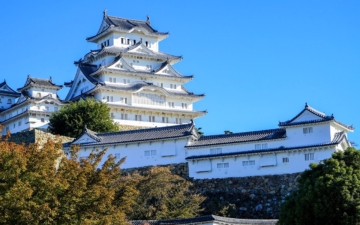 " alt="foo" width="300" height="187">
" alt="foo" width="300" height="187">
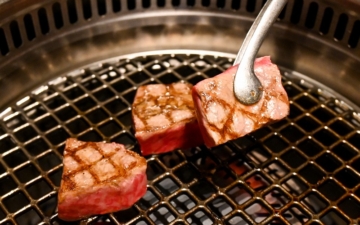 " alt="foo" width="300" height="187">
" alt="foo" width="300" height="187">
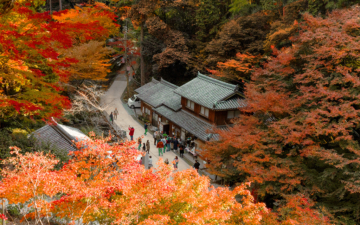 " alt="foo" width="300" height="187">
" alt="foo" width="300" height="187">
